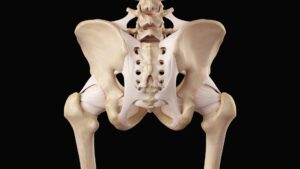Earning a massage CEU generally means signing up for a massage continuing education class that will meet the guidelines and requirements relevant to the state or region in which you practice professional massage therapy or bodywork. Of course, this pertains only to those practitioners who happen to work in areas where this kind of continued massage training is necessary in order to renew and maintain one’s license to practice. Typically, this applies to manual therapists who practice in places where official massage credentials exist and the field is regulated by a governing board of some kind.
According to recent counts, 45 states, the District of Columbia and five Canadian provinces fall into the category mentioned above, in that these places have regulations in effect that apply to those folks who wish to work as professional massage therapists and bodyworkers. Of course, in order to determine whether you are required to earn a specific massage CEU, it will always be important to check with your particular state, as well as local governing bodies and, potentially, your employer as well. You will also want to find out if there are any guidelines around the massage CEU process.
Often, you will find that, beneath the umbrella requirement that one must earn a massage CEU in order to renew and maintain a license or credential to practice, there also are other more detailed requirements, usually pertaining to the provider of the massage therapy CEU and possibly the topic of the massage therapy continuing education as well. For example, one requirement that may be fairly common is that the massage CEU must be offered by an NCBTMB approved provider.
Another aspect of the guidelines you might find could be a requirement to earn massage CEs that focus on a particular topic, such as ethics or safety issues. Simply be sure to check to find our what your state and local regulation boards require, so you can feel confident you are making the right investment of time and money when it comes to your next massage CEU. You need to be sure it will tick the right boxes in order for you to meet any relevant regulation requirements and guidelines.
Once you are certain you have pinned down any legal details surrounding your license to practice and the necessary massage CEU, you should have a better idea of how much freedom you have when it comes to selecting your next continuing education class. Ideally, you will be able to “kill two birds with one stone” and earn the necessary CEUs by taking classes that truly appeal to you, too. However, if the rules and regulations in your region are fairly stringent and you feel unable to take the courses you feel most passionate about and tick the right boxes on the requirement list, make sure you do what it takes to meet the regulatory needs, and then set off on your own to take those classes that most appeal to you as a professional massage therapist.
This is where the fun begins, because you have a chance to pick and choose from a long list of continuing education classes, searching for the ones that have the most to offer in terms of benefits to both you and your clients. For example, you may decide to take a class on deep tissue massage techniques if you feel your skill set could use a boost in this area. As another example, if you are looking to make the transition from the more standard relaxation model of massage toward medical massage or massage for sports therapy, then you can start to search for those classes that can teach you the right skills to make that move.
For those practitioners who find a more clinical massage model especially appealing, the work of Erik Dalton, founder of the Freedom From Pain Institute and creator of Myoskeletal Alignment Techniques (MAT), can cover many bases within one set of continuing education classes. From massage techniques for back pain to overall orthopedic massage, MAT has been developed to work for a wide variety of clients and within a long list of professional settings, while still remaining firmly within the scope of practice for massage therapy.









